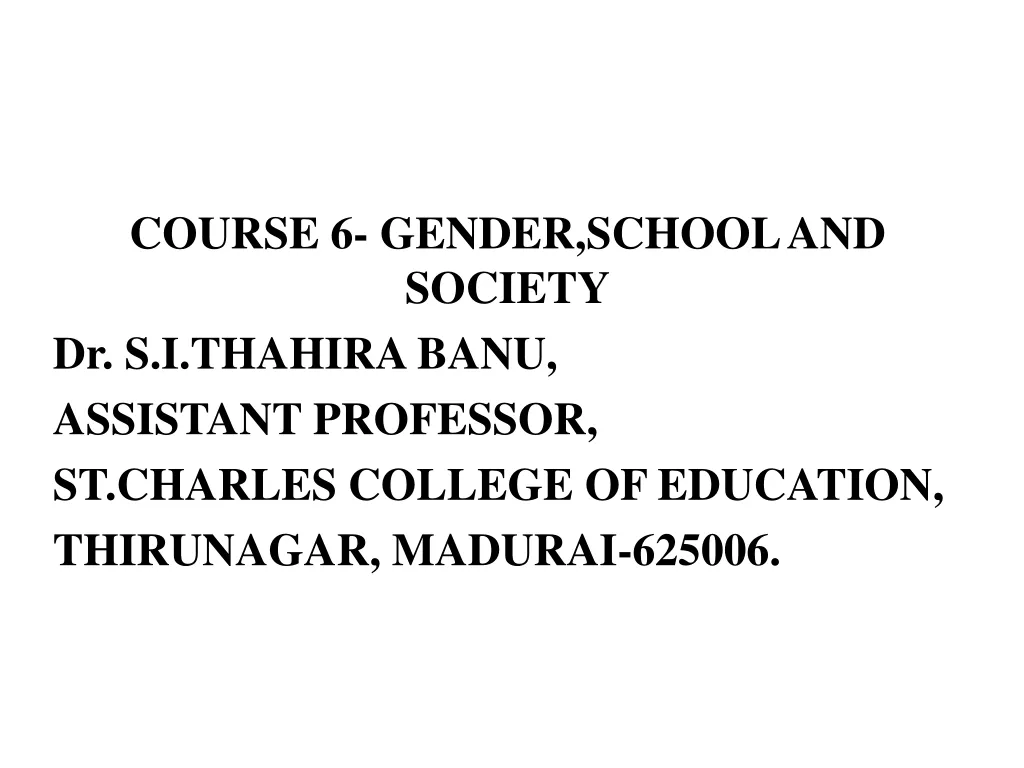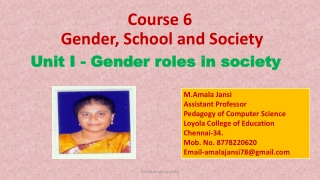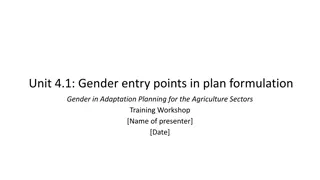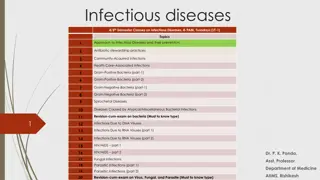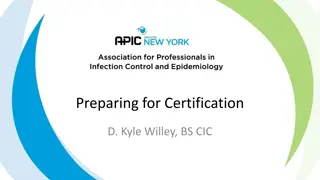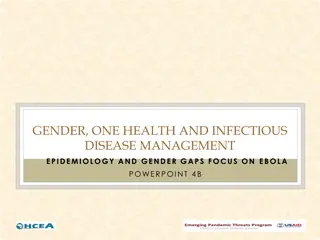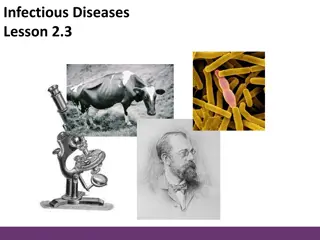GENDER, ONE HEALTH AND INFECTIOUS DISEASE MANAGEMENT
Case study development in infectious disease management focusing on themes like disease ecology, multi-disciplinary collaboration, and policy implications.
Download Presentation

Please find below an Image/Link to download the presentation.
The content on the website is provided AS IS for your information and personal use only. It may not be sold, licensed, or shared on other websites without obtaining consent from the author.If you encounter any issues during the download, it is possible that the publisher has removed the file from their server.
You are allowed to download the files provided on this website for personal or commercial use, subject to the condition that they are used lawfully. All files are the property of their respective owners.
The content on the website is provided AS IS for your information and personal use only. It may not be sold, licensed, or shared on other websites without obtaining consent from the author.
E N D
Presentation Transcript
GENDER, ONE HEALTH AND INFECTIOUS DISEASE MANAGEMENT CASE STUDY DEVELOPMENT- P O W E R P O I N T N O . 1 0
WATCH VIDEO FATAL INFESTATIONS Use this video as a case study and identify the key themes.
THEMES Disease ecology and epidemiology Human animal and environmental dynamics Multi-disciplinary collaboration Emergency preparedness and response Social-political dimensions Policy implications
WHAT IS A CASE? A case study is a puzzle that has to be solved. A case should have a problem that the readers need to solve The case should have enough information in it that readers can understand what is in it, think about it, analyze and be able to come up with proposed solutions. A good case is more than just a description.
CASE STUDY DEVELOPMENT The purpose of a case study is to provide a more thorough analysis of a situation or "case" which might reveal interesting information about that classification of things. The key is to take your large problem and bring it down to the level of the individual or single unit.
BASIC STEPS IN CASE WRITING Research Analysis Actual writing
STEPS TO WRITING A CASE STUDY Determine what your case study will be about. Develop learning objectives for the case. Choose a case site. Think of a location, an organization, company, or individuals who are dealing with that problem. Think through open ended questions that will provide you with information about what is working in that situation, how the situation developed and which parties are involved.
RESEARCH Library and internet research, what has been written before, important background info. Interview people who know the place or the situation. Avoid `yes or `no questions.
ANALYSIS PHASE Put all the information in one place. Assign sections of material to different people. Each person figures out what is really important. Environment and orangutan Try to formulate case problem in a few sentences to start with. This will help you figure out if you need more information.
CASE WRITING Describe the problem or case question you want the reader to solve. Organize the sections of your case Introduction to the problem Background on the case: place/ person/ theme/ community/ disease What you know about the problem, how it developed, what solutions came up Suggested solutions: may or may be not Conclusion: Must leave it open for readers to come up with their own conclusions.
WRITE THE CASE STUDY - Introduction to the problem: - Background on the case: Information about your case study site, where or who it is. - The next several sections should be about the problem as it pertains to the case. Describe for the reader what you learned about the problem at this site, how it developed, what solutions have already been proposed and/or tried, and feelings and thoughts of those working or visiting there. - The concluding paragraph should wrap it up with possible solutions, without solving the case per se. It might make some final references to the stakeholders and their thoughts about possible solutions, while leaving it open to the reader to come up with a different answer.
CASE STUDY ANALYTICAL QUESTIONS Formulate some questions that you will want whoever is reading the case to answer for every section that will direct them. Basically your assessment questions Add important references that will be useful for your readers/learners. Have some answers to these questions.


